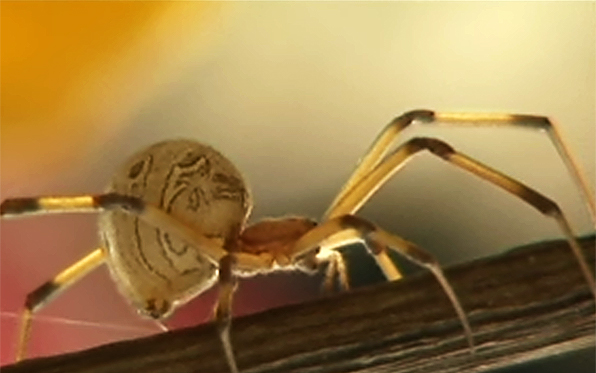There’s a new woman in town. You may have heard; she’s gotten a lot of media attention lately. Eight legs, four rows of eyes, venomous — she even scares black widow spiders.
That’s right. The brown widow spider, or Latrodectus geometricus, is everywhere these days, especially the news.
A recent UC study that reported huge increases in brown widow populations sparked these headlines: “Brown Widow Spiders Taking Over Southern California,” Brown Widow Spiders on the Rise,” and “Brown Widow Spiders are Pushing Out Black Widows in California.”
So what do you really need to know about the brown widow?
Be careful, but don’t panic.
RELATED: Red Bug Is Here – Should You Worry?
“You should treat them the same way you treat black widows,” said Chris Conlan, supervising vector ecologist from the County Department of Environmental Health (DEH). “If you have little children, you should teach them how to avoid (brown widows) and you should patrol your yard to check for spiders on kids toys … but it’s not like this is this giant new plague that is going to kill us all. It’s just this new thing we’ve got to learn to deal with.”
Brown widow spiders are not vectors — pests like mosquitoes, ticks and rats that the County actively works to monitor and control because they can spread disease. But Conlan said they are a significant pest and DEH helps county residents by answering questions, providing information and identifying the spiders if people bring them in or send in photographs.
Conlan said it is true that brown widows were never seen in California until 2003; that their numbers have exploded; that they now greatly outnumber native black widows; and they like to hide in places where they bump into people — urban areas, backyards, in patio furniture, gardens, outdoor toys, playgrounds and even cars and vehicles.
However, he said, they’re less aggressive than black widows and less apt to bite people, preferring to retreat than fight. In addition, brown widow bites are reported to be less venomous.
But they will bite if threatened, cornered or protecting their egg-sacs. UC Riverside, which has led research on brown widow spiders, said their bite hurts but is relatively harmless. Conlan, however, recommended that people who were bitten see their doctor to be safe.
“These spiders are not stupid,” Conlan said, “they’re small and if they see a giant fleshy thing (a finger, hand or foot), they know when they’re outmatched. They don’t want to bite you, but they will if you put them in a position where they think it’s their life or yours.”
RELATED: Wasp Drafted to Suck Life from Citrus Threat
Here’s more to know about brown widows:
- How to Identify Them: A lot of people may not be able to easily pick out a brown widow from any other brown spider. Females can be up to ½ inch in length with legs extended. Males are much smaller. Like the black widow, which has a red, distinctive hourglass marking on its underside, the brown widow also has an hourglass-like marking on its abdomen; but it’s orange in color. The easiest way to tell if you have brown widows is by finding their egg sacs, which are very different than other spiders. They are spherical in shape. But instead of being smooth, they’re covered in tiny spikes.
“Kind of like a spider disco ball,” Conlan joked. - Where they come from: Conlan said that there is still some debate about this, but that most believe the brown widow originated in South Africa.
“Part of the reason for the debate is that the brown widow is such a good hitchhiker that it went worldwide before scientists had the chance to study the critter,” Conlan said. - Are Brown Widows Pushing Black Widows Out of the State? Conlan said that is difficult to say. Even though brown widow populations have jumped, he said, they’re still being found mainly in urbanized areas. Conlan said until more are found in rural areas outside of those urban settings, it will be difficult to tell if the invasive brown widow is out-competing — and driving out — native black widow spiders.
For more information about brown widows, black widows and other spiders, go to DEH’s spider Web page. To contact DEH’s Vector Control program call (858) 694-2888 or email vector@sdcounty.ca.gov.
Video: The County profiled brown widow spiders in this video from 2010.





